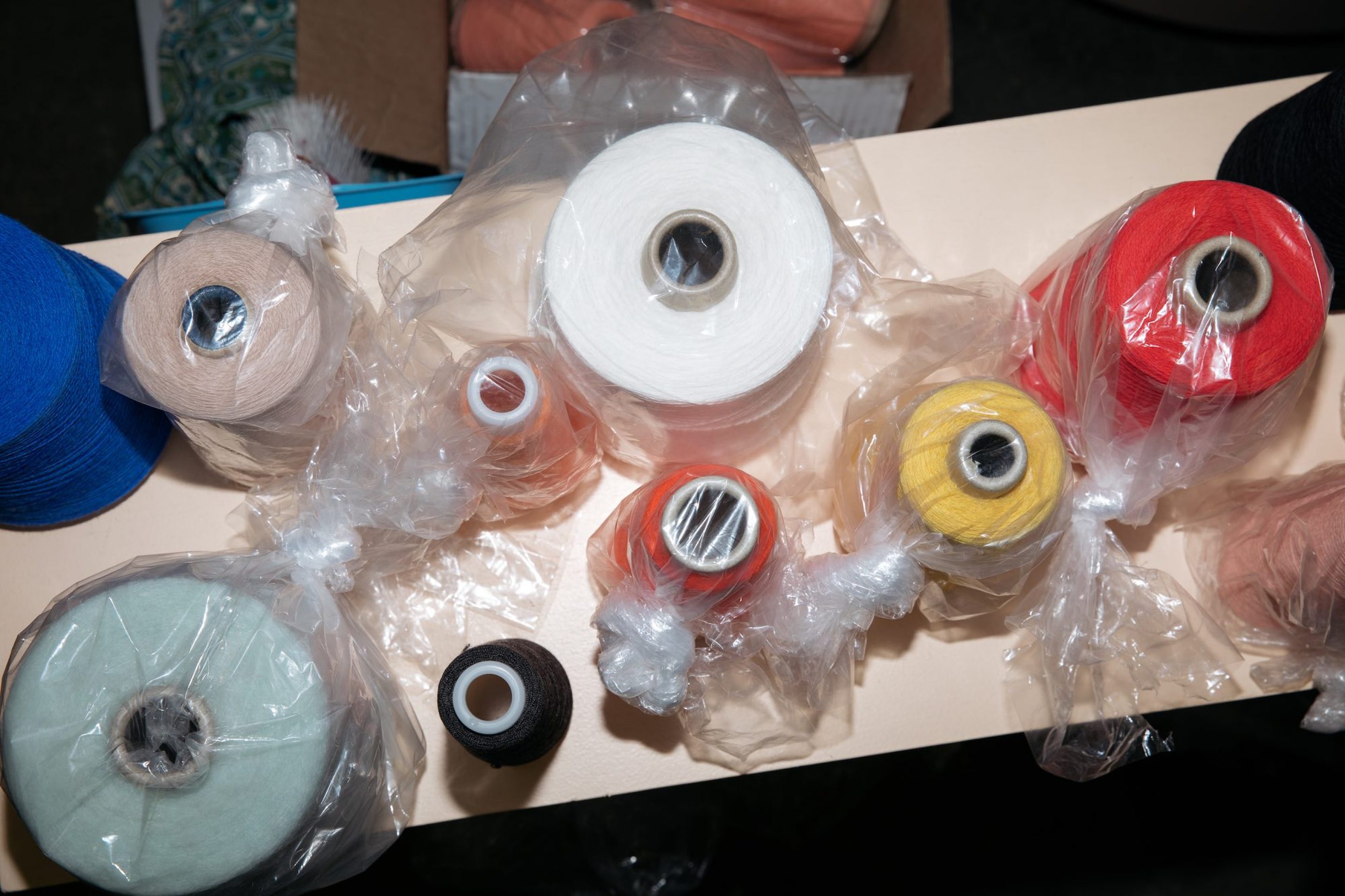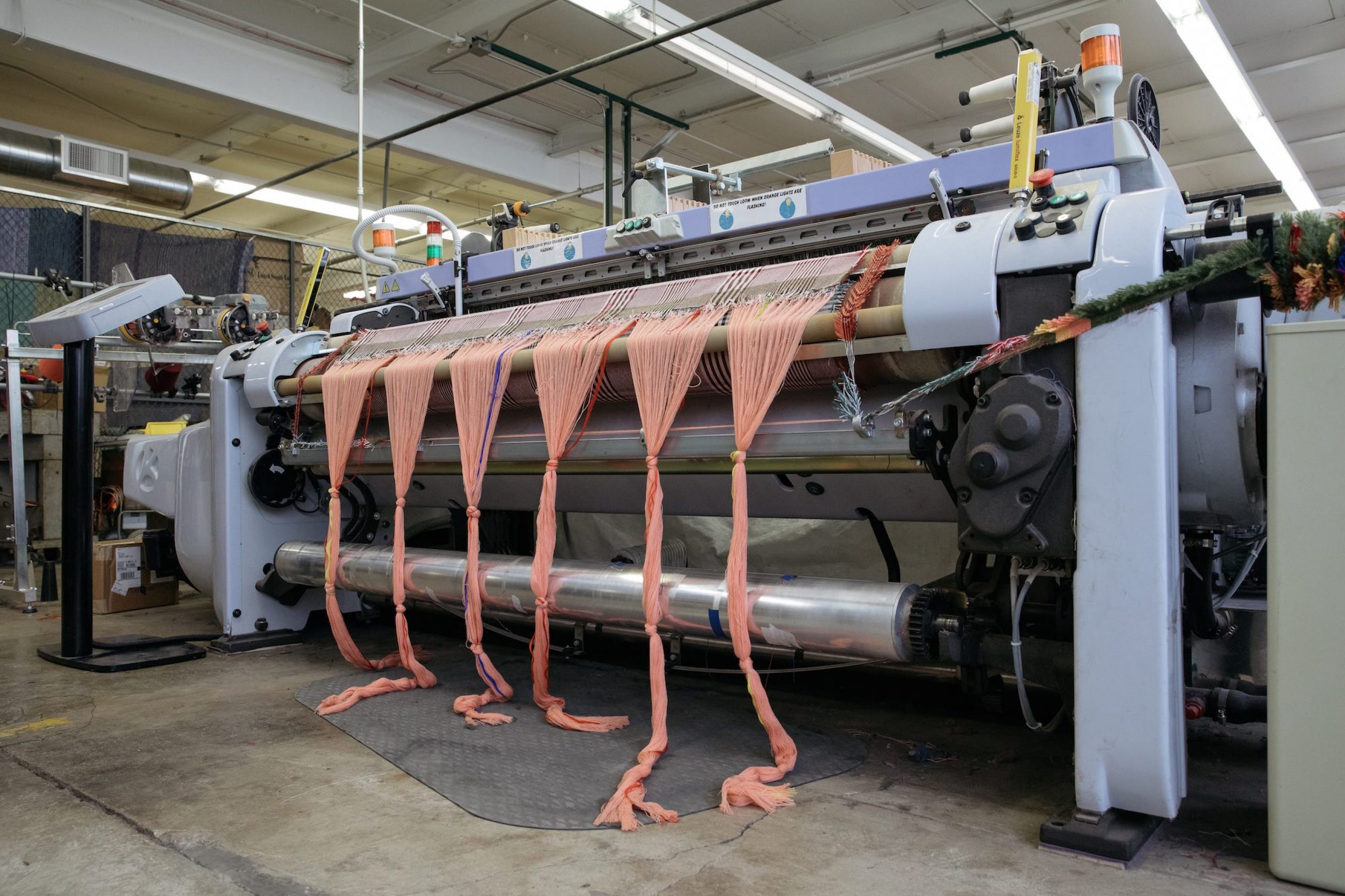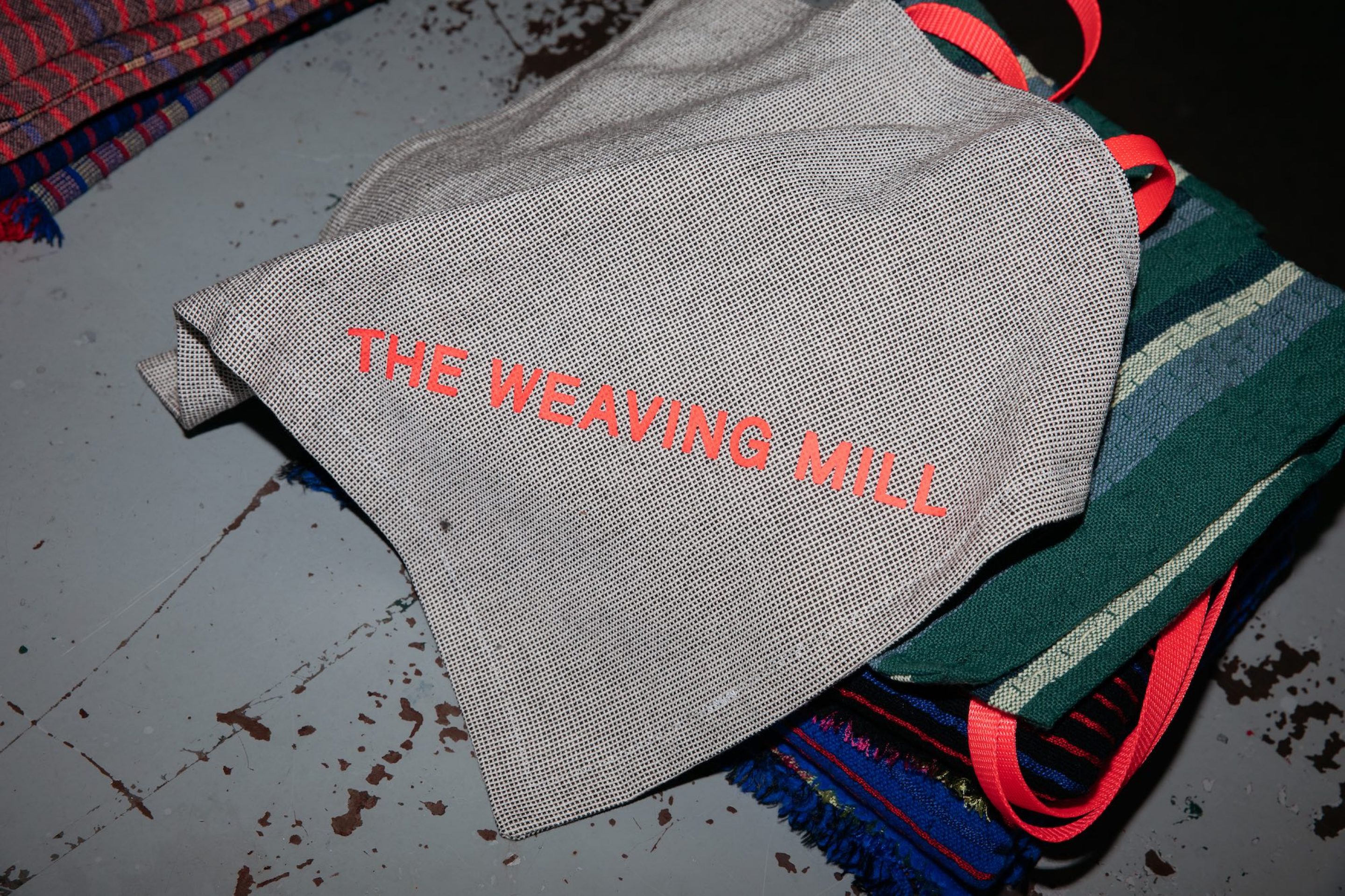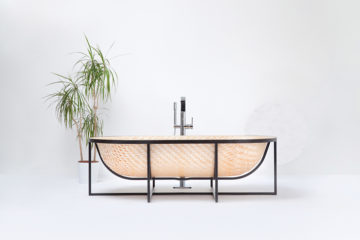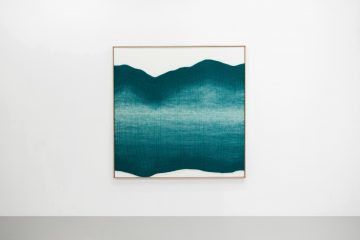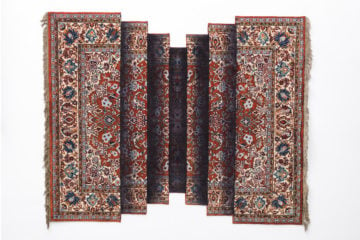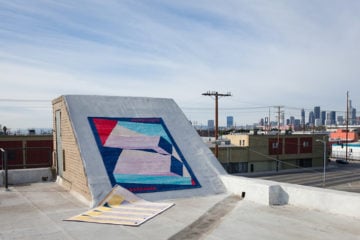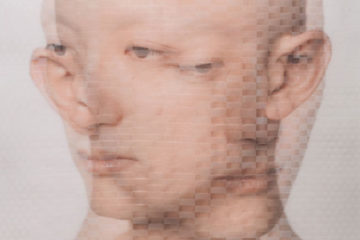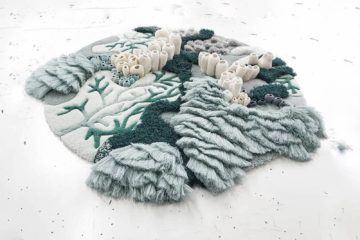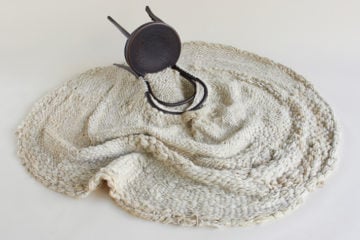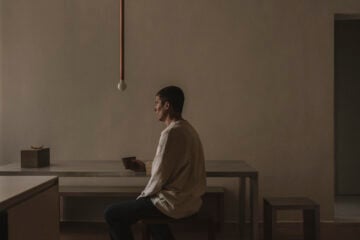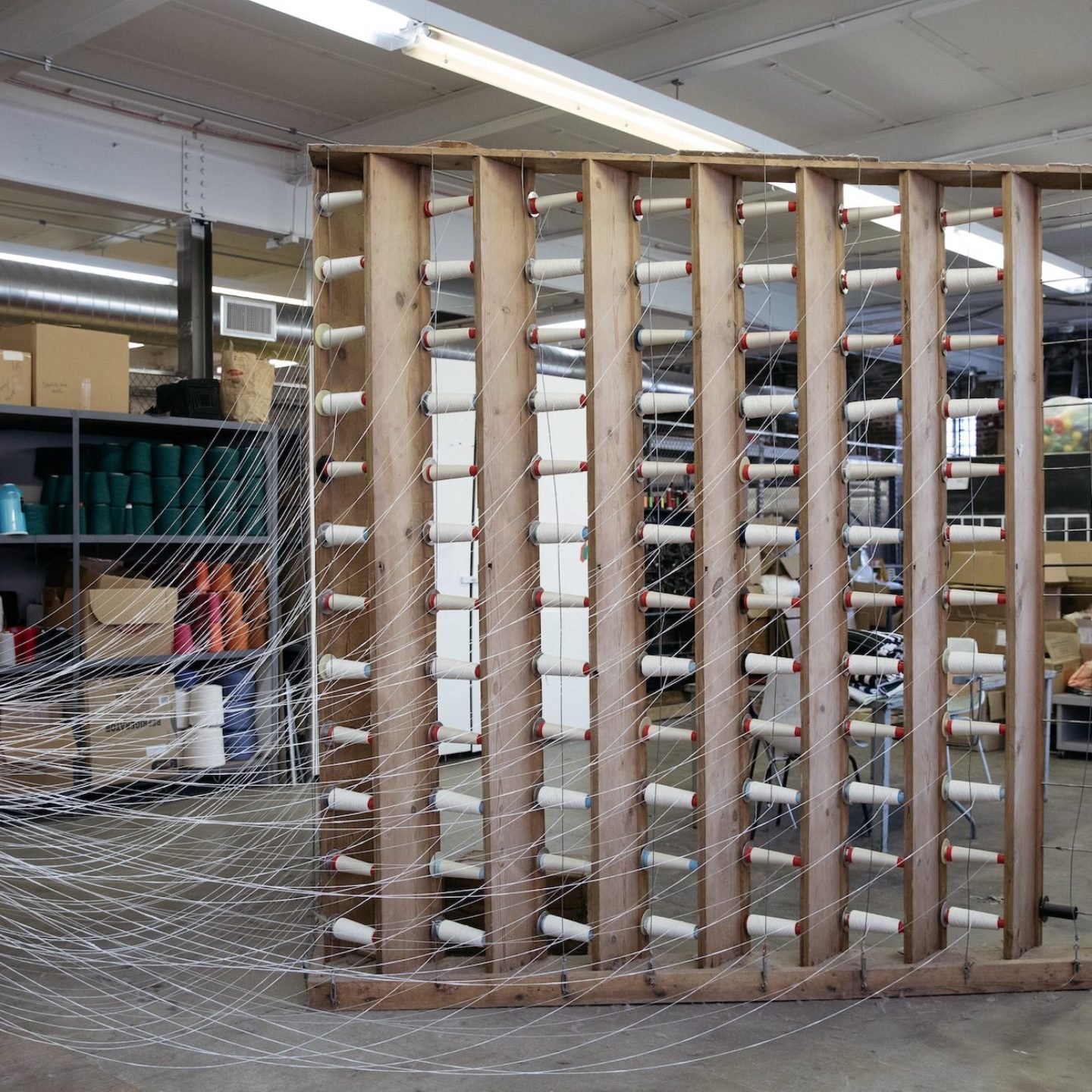
Approaching The Industrial As An Artist: The Weaving Mill In Chicago
- Name
- Emily Winter · Matti Sloman
- Images
- Lukas Korschan
- Words
- Rosie Flanagan
Emily Winter and Matti Sloman aren’t from Chicago — but that hasn’t stopped them from calling it home. In this bustling arts city, they have founded a creative studio that challenges conceptions of craft, industry and what it means to create. Their studio is The Weaving Mill.
The Weaving Mill looks the industrial part — spools of thread, drapes of fabric, floor looms, a knitting machine and two large-scale commercial looms crowd the space. But when you see Emily and Matti amongst the clamor of the studio, it becomes clear that this project is about much more than production. The artist pair met whilst studying textiles at Rhode Island School of Design, and when the opportunity to take over an industrial weaving studio in Chicago arose they jumped at it. Reckless? Undoubtedly. But hard work and a pluralistic creative vision have helped them fashion a space that challenges the division between craft and industry, and able and disabled artists.
Their unique approach to design has led them to collaborations with Atelier Ace in the creation of pillows for the Ace Hotel Chicago’s lobby lounge. In addition to production work like this, and their own creative practices, from this small site they also provide a textile education program (W.E.F.T., Westtown Education for Textiles) for adults with developmental disabilities, and run a correlative residency program (W.A.R.P., Westtown Artist Residency Program) that encourages collaboration between visiting artists and the participants of W.E.F.T..
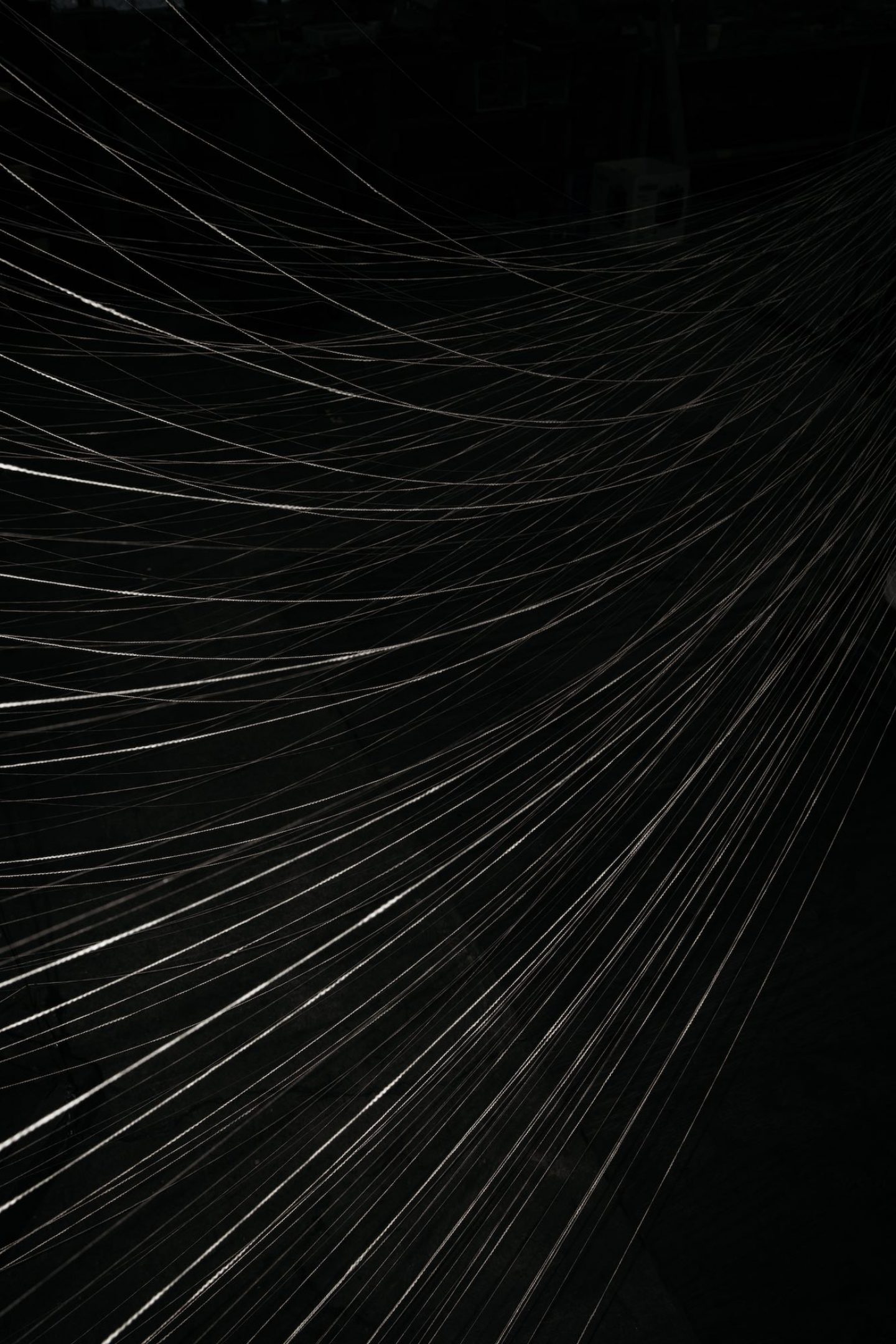
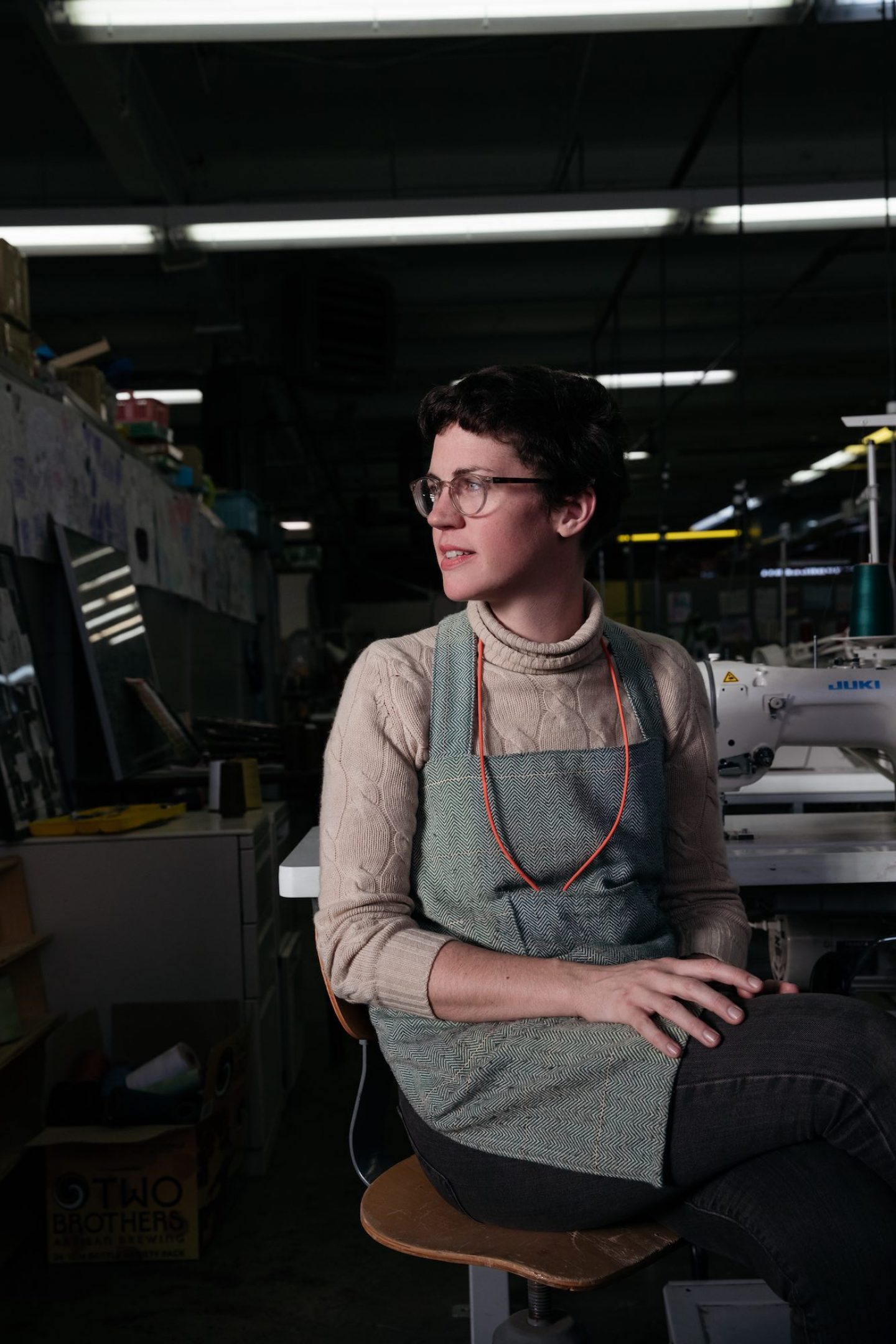
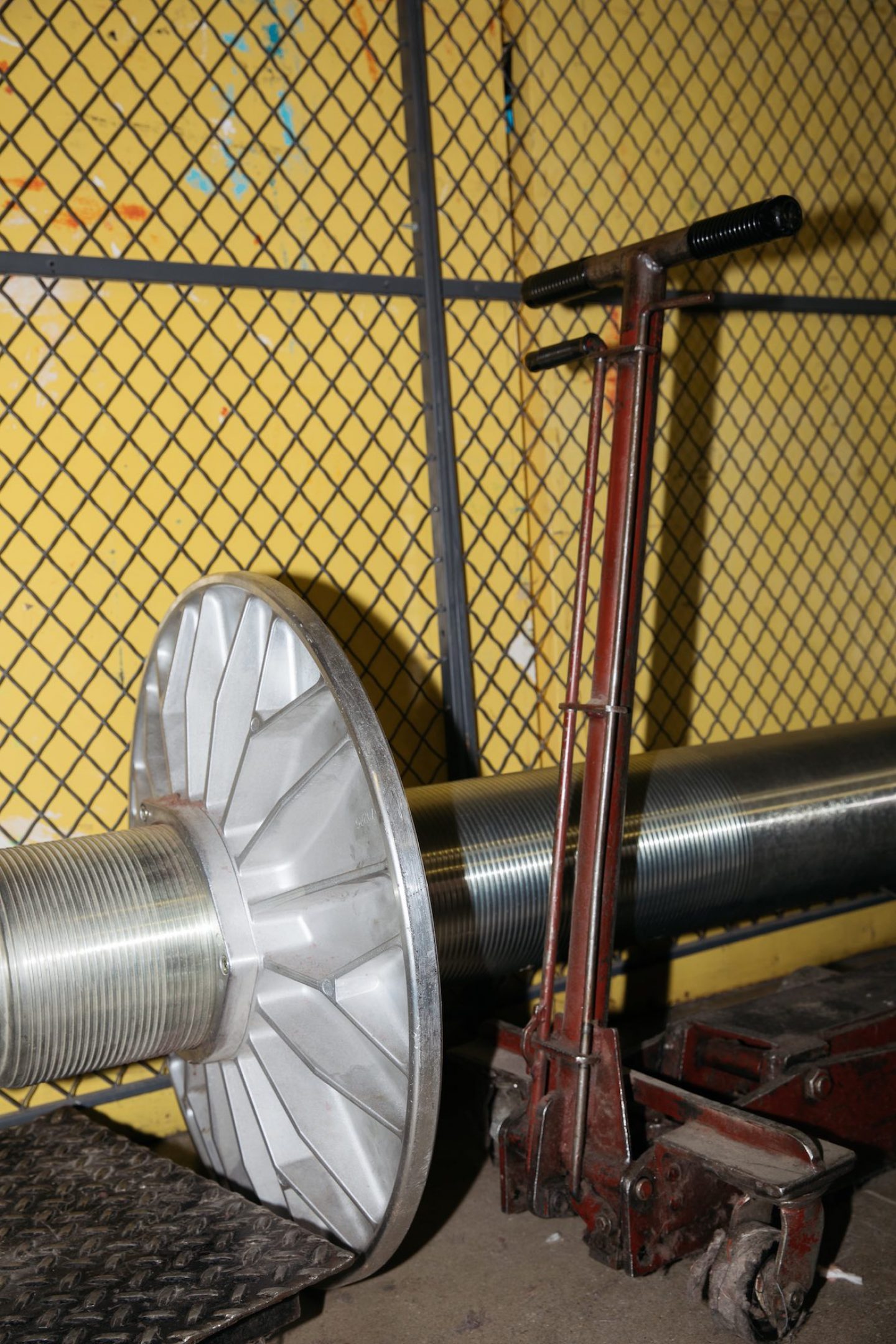
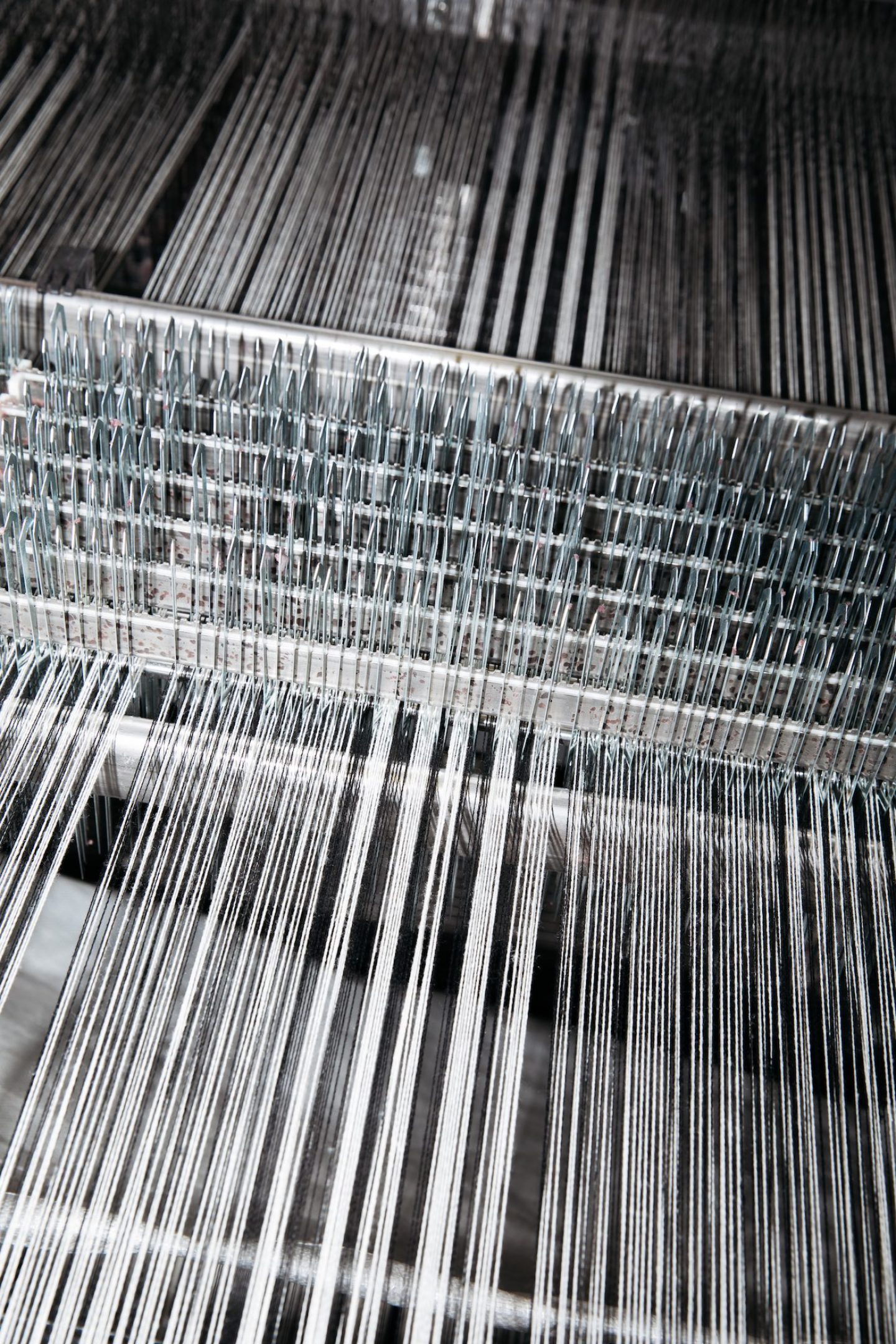
Emily and Matti are from opposite sides of America — San Francisco and Boston respectively — which makes Chicago seem a strange place to open a business. They explain their opening of The Weaving Mill with a lot of hand gestures and laughter, throwing about words like ‘gestation’ and ‘confluence’ and ‘manifestation’. On hearing the story, the serendipitous nature of their path certainly rings true. In the early 2000s, a Chicago linen manufacturer began the process of closing down. During this process, they partnered with local social service agency, Envision Unlimited, and moved some of their weaving equipment into a studio at the Westtown Center, with the goal of running a textile job training program from the site. Matti explains; “When Emily graduated from college she was hired as a teaching artist at the Westtown Center, and while she was working there she recognized that there was an industrial weaving studio at the back of the building. I think she kind of always had her eye on it.” While Emily was working at Westtown Center as a teacher, this studio was only vaguely in use — ceasing to operate entirely in 2015.
“In our second year of grad school,” Matti tells us, “Jim Horcher, the man who was running the weaving facility, officially retired. Emily got a phone call from Monika Kimrey, the director of Envision’s art program, telling her, and then I got a phone call from Emily being like ‘this is happening.’ We got together in February of that year and came up with a pitch.” Emily continues, “Matti and I started brainstorming about what we might do with the facility, and from the very beginning, it was the idea of having it be a kind of artist-run studio. Matti and I have really synchronistic, but different, skill sets and interests, so it’s an exciting workspace for the two of us because we’re really interested in making our own work, and then working with other people to make new work.”
“Whenever you take over a new facility or you start a new project, you kind of think, what do I need to make my work?"
After securing the space, they embarked on a research trip that took them to the southern and eastern seaboard of the United States. They visited artists and other weaving mills, education sites, museums — anywhere that people were working with fabric and people. “Whenever you take over a new facility or you start a new project, you kind of think, what do I need to make my work?” explains Matti. “And we kind of had the same idea after the trip — that we didn’t need more money or new equipment. The looms that we have here are very limited, and our interest was in taking what we already had and pushing into it. As opposed to being like, ‘we need 17 new weft positions’, or ‘we need to set up the loom in all these different variables’, instead we play with those variables that we have already.”
Included in these variables was the partnership between the linen manufacturer; who had previously been in the space, and Envision Unlimited; the nonprofit social service organization that supports adults with disabilities. Emily and Matti’s pitch for taking over the studio included a reworked program for Envision’s day program attendants, “You know, we presented our pitch and they opened their doors to us,” Matti tells us. “They allowed us to learn on these machines inside their building, and trusted us to engage with their clients that they are responsible for. They trusted us entirely, and that supported mine and Emily’s way of working.”
The result of this partnership is The Weaving Mill’s W.E.F.T., an arts education course that runs alongside Envision Unlimited’s existing day program for the intellectually and developmentally disabled. “From the beginning, we’ve had kind of different arenas working that have been important to the whole kind of arc of The Weaving Mill,” explains Emily, “programming that overlaps with Envision Unlimited has been one of those.” The day program run by the social service organization is expansive, providing activities from Monday to Friday, nine to five. “W.E.F.T. is happening alongside that a couple of days a week,” explains Matti. “Our group ranges from six to twelve people who are signing up to do sewing classes or weaving classes or whatever. So structurally it’s like a supplementary program that is happening alongside an existing day program.”
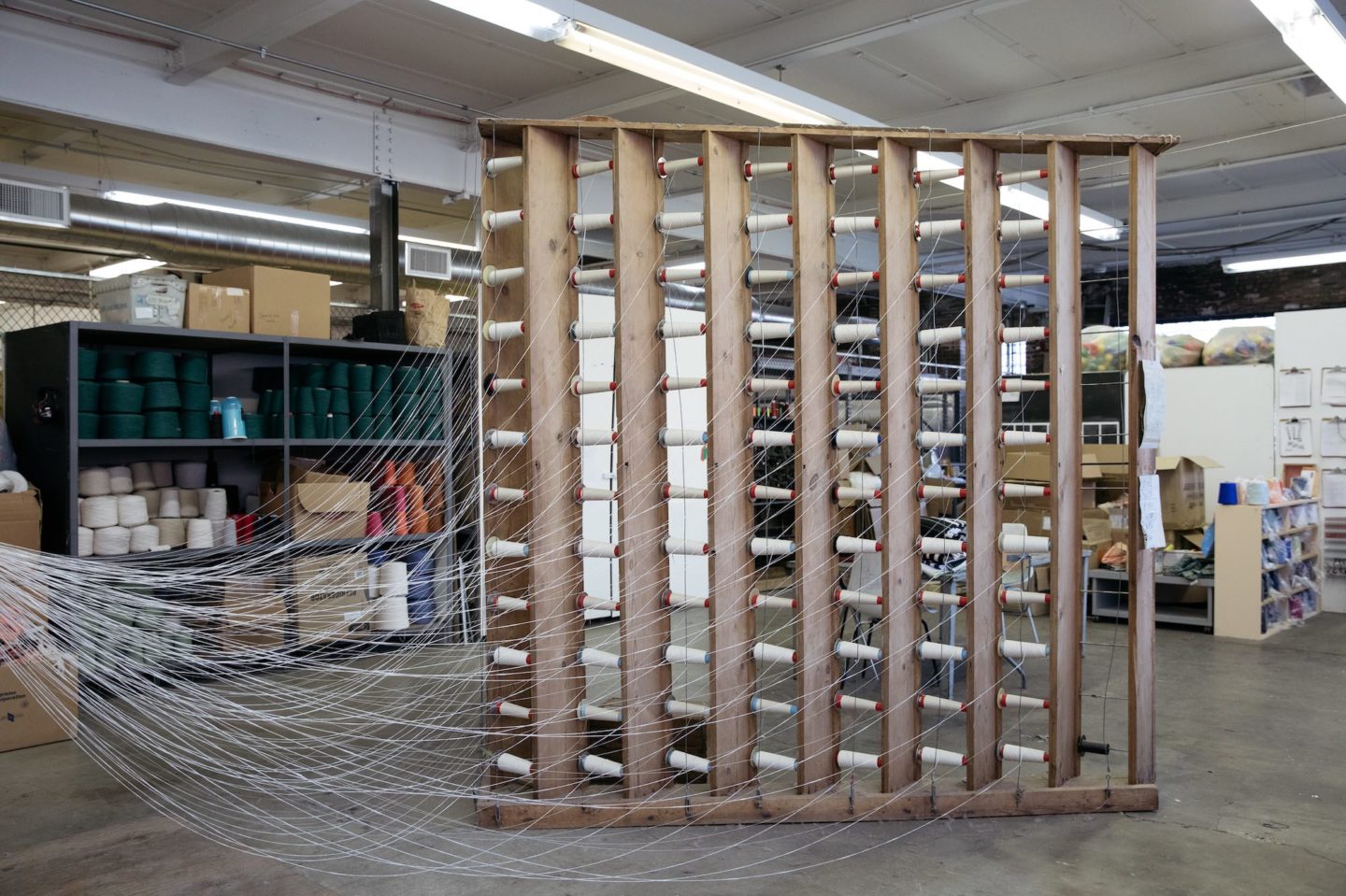
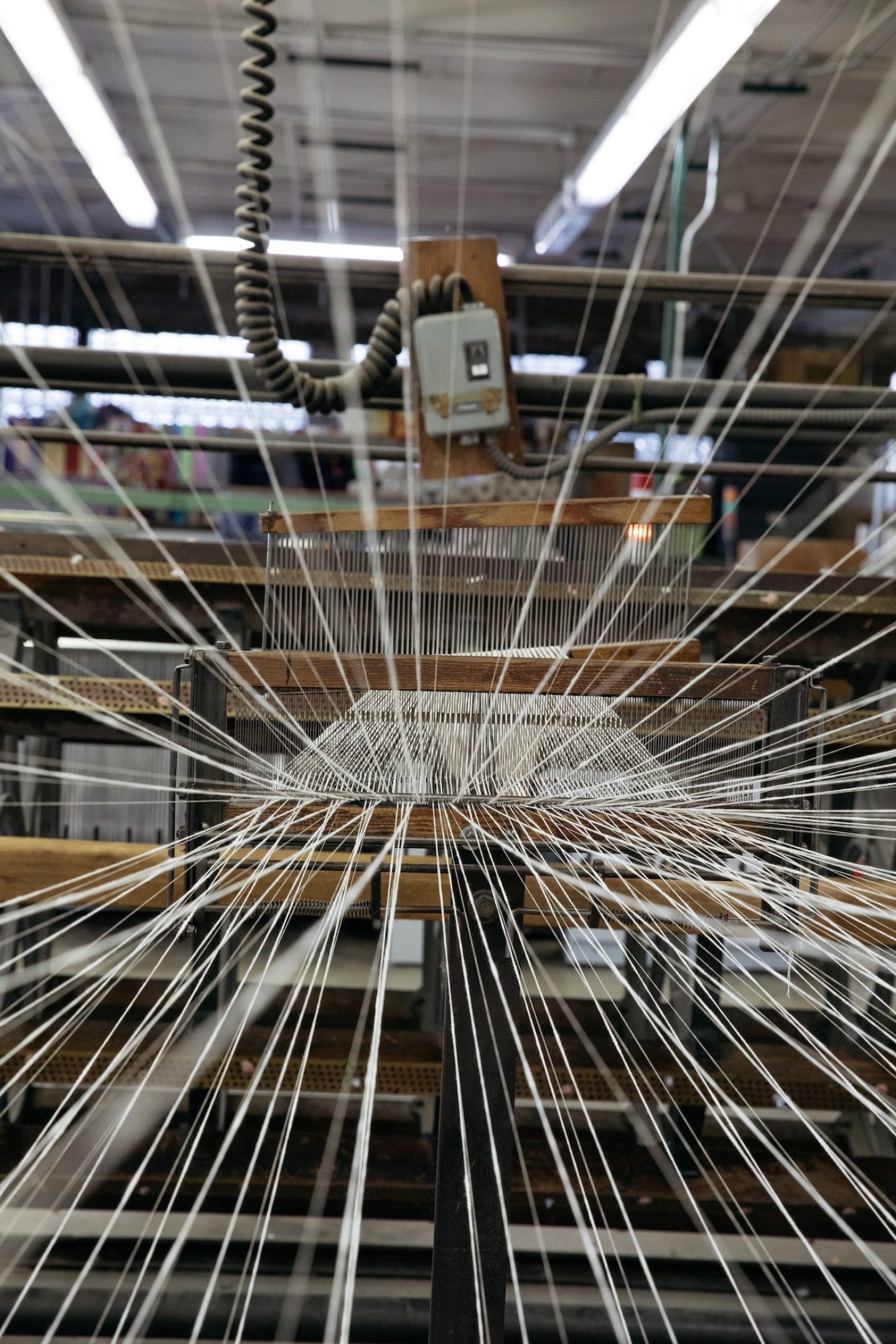
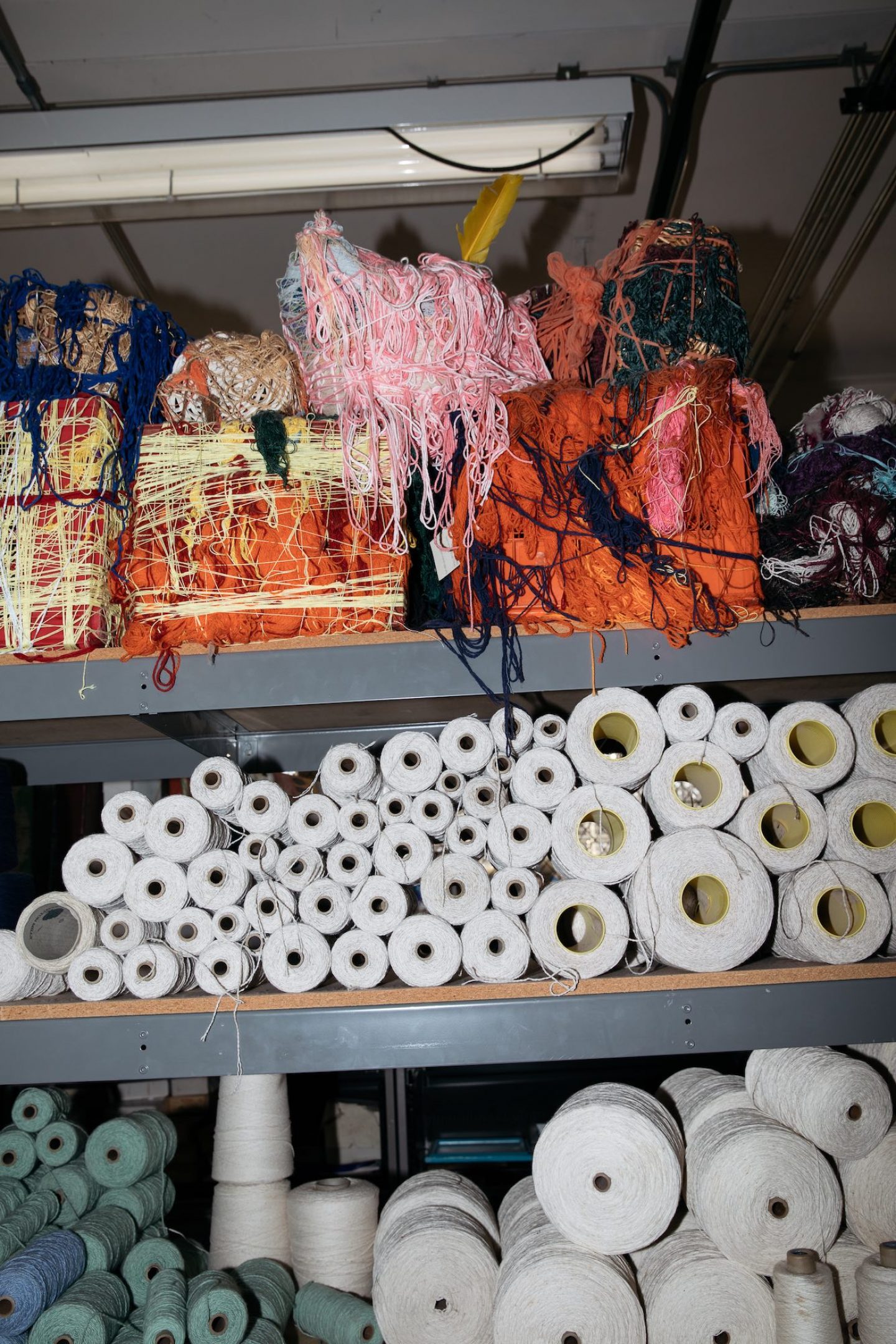
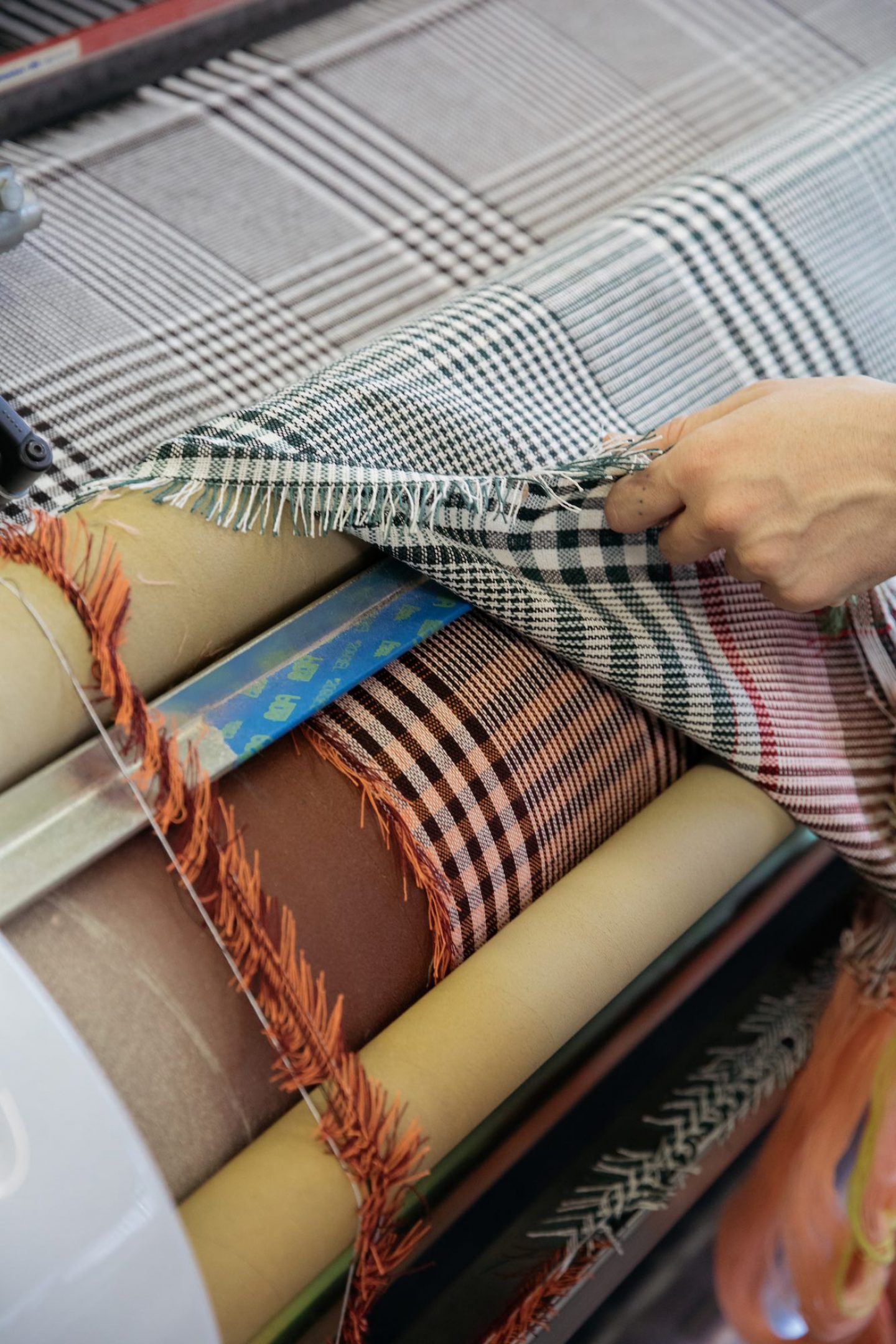
The W.A.R.P. artist residency runs in parallel to W.E.F.T. — this month-long, annual program is designed to give artists access to studio space and to collaborate with the artists of Envision Unlimited. “The residency program that was something that — before we even moved to Chicago — was something that we were both like, yes, we need this,” Matti explains. “The initial idea was to bring in an artist, someone from the outside who doesn’t participate at Westtown, and have them spend a month here at the Studio.”
The residents have studio space and access to hand tools, the knitting machine, floor looms, and an assortment of other equipment. Perhaps their most valuable resource though are the artists from W.E.F.T. themselves. During their month at Westtown, each resident is responsible for 16 hours of programming with W.E.F.T. — Matti explains; “Every single artist has approached this differently… ideally what we’re looking for in an artist is that whatever they’re working on in their studio is connected to what they’re doing with the Westtown folks. Because what we realized pretty immediately is that it’s not a top-down relationship, it’s not the artist coming in and showing people a new thing. It’s very much give and take — the work that the artist usually leaves with is something that you didn’t expect, and it happened because they were inspired by things that were happening in these workshops.”
We’re two artist who are wearing a lot of different hats — which in itself is not so unusual, but I think that our approach is unusual, definitely.”
Between W.E.F.T. and W.A.R.P., there are also artist projects, production works, and the collaborative work that Emily and Matti produce together. Their shared practice is based around question and response; distilling their experience working and running The Weaving Mill, and releasing it in textile forms. Matti explains, “The Weaving Mill projects that Emily and I work on usually start with a question — from how much material do you need to make 100 blankets, to color theory, or object versus the usability of an object, or choices of material.”
As artists working with industrial techniques, inevitably our conversation moves to the division between handcrafted and machine made. Emily and Matti interestingly see their work as handcraft, despite their sometimes industrial methods. Emily explains, “I think there is a false divide between the hand loom and the industrial loom, and a kind of romanticisation or fetishization of the handloom…and I feel like what we do in our studio is really approach the industrial machine as artists. And for me as a hand weaver, it’s just like everything is bigger and faster, but that’s really it. I think a lot of it has to do with how you choose to use the equipment… You know with the industrialization of this kind of machinery, everything is engineered towards higher efficiency and faster production — simpler, smoother, faster, louder, faster, stronger, whatever! A lot of what we try to do is override those things, or understand why a machine might work a certain way, and to try to evaluate whether or not that’s the right thing for a particular project, and try and use some of these systems of efficiency towards somewhat alternative ends.”
From their visions of making and handcraft to the running of their studio and the associated programs — there is little about Emily and Matti’s Weaving Mill that isn’t unique. “I think we’re really different, we’re real outliers,” says Emily. “Our shop is tiny, we’re running industrial machines, but we only have two of them, and we don’t run them all the time. We’re two artist who are wearing a lot of different hats — which in itself is not so unusual, but I think that our approach is unusual, definitely.” Matti continues, “Absolutely, and I think that The Weaving Mill can move beyond this particular building, I don’t mean like starting another facility, and I don’t mean buying more looms — but I think the studio can evolve beyond this particular form. Had you asked us a year ago, absolutely not. Two years ago, heck no. But in this moment I think we have started to think more expansively about what The Weaving Mill is, and yes it is the physical location, but it is also the way of working and it’s the stuff that comes out of it, and the people that we work with.”
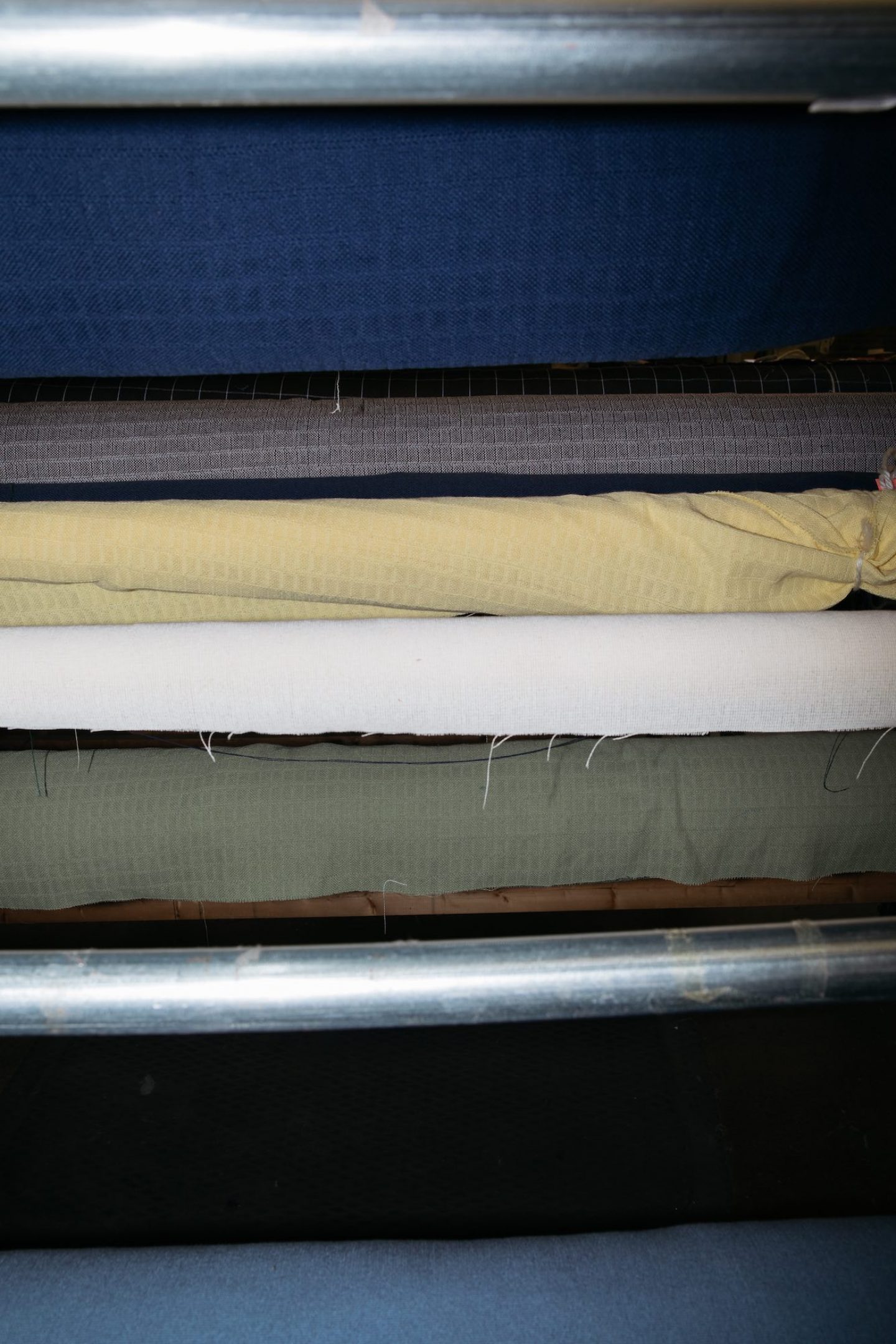
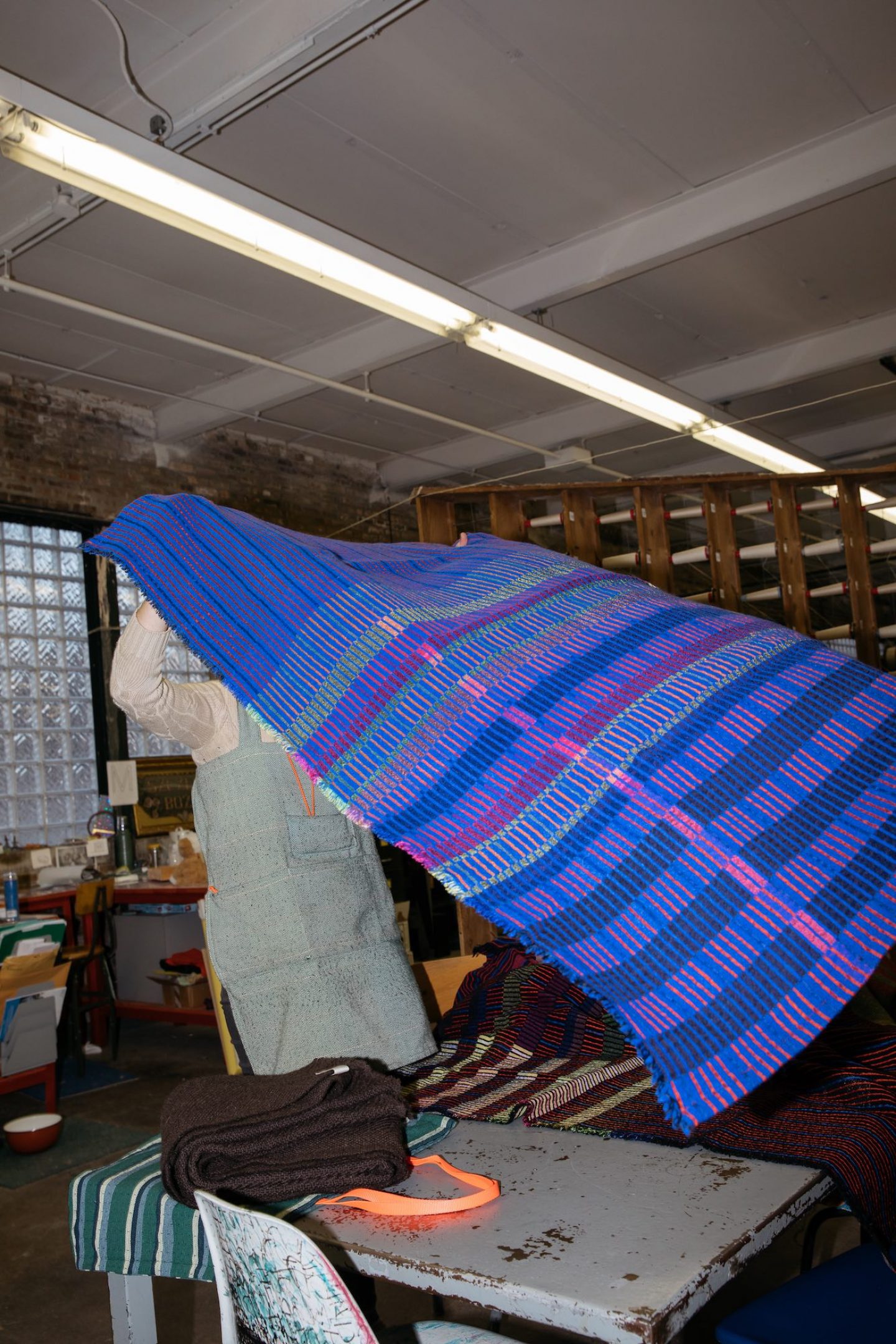
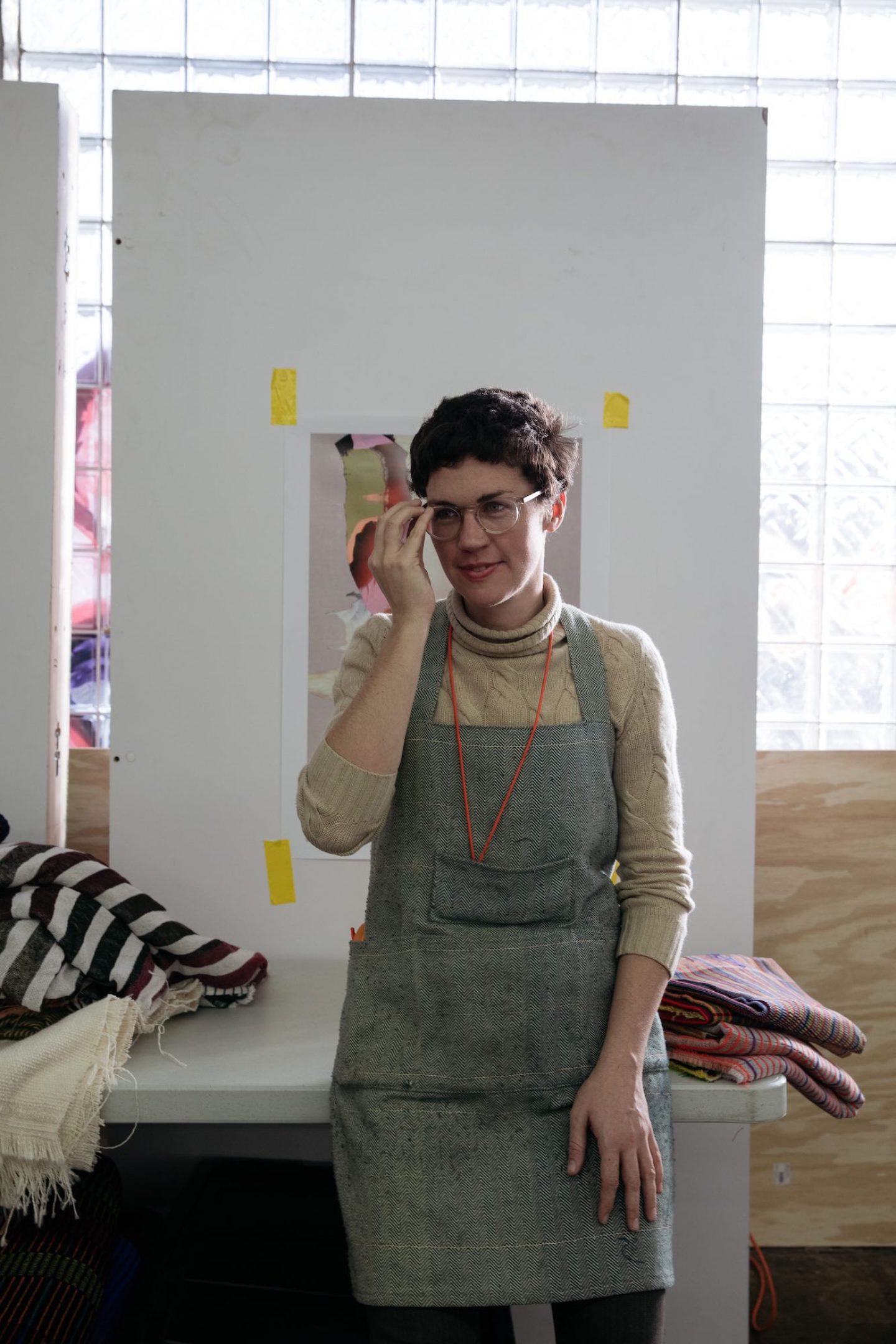
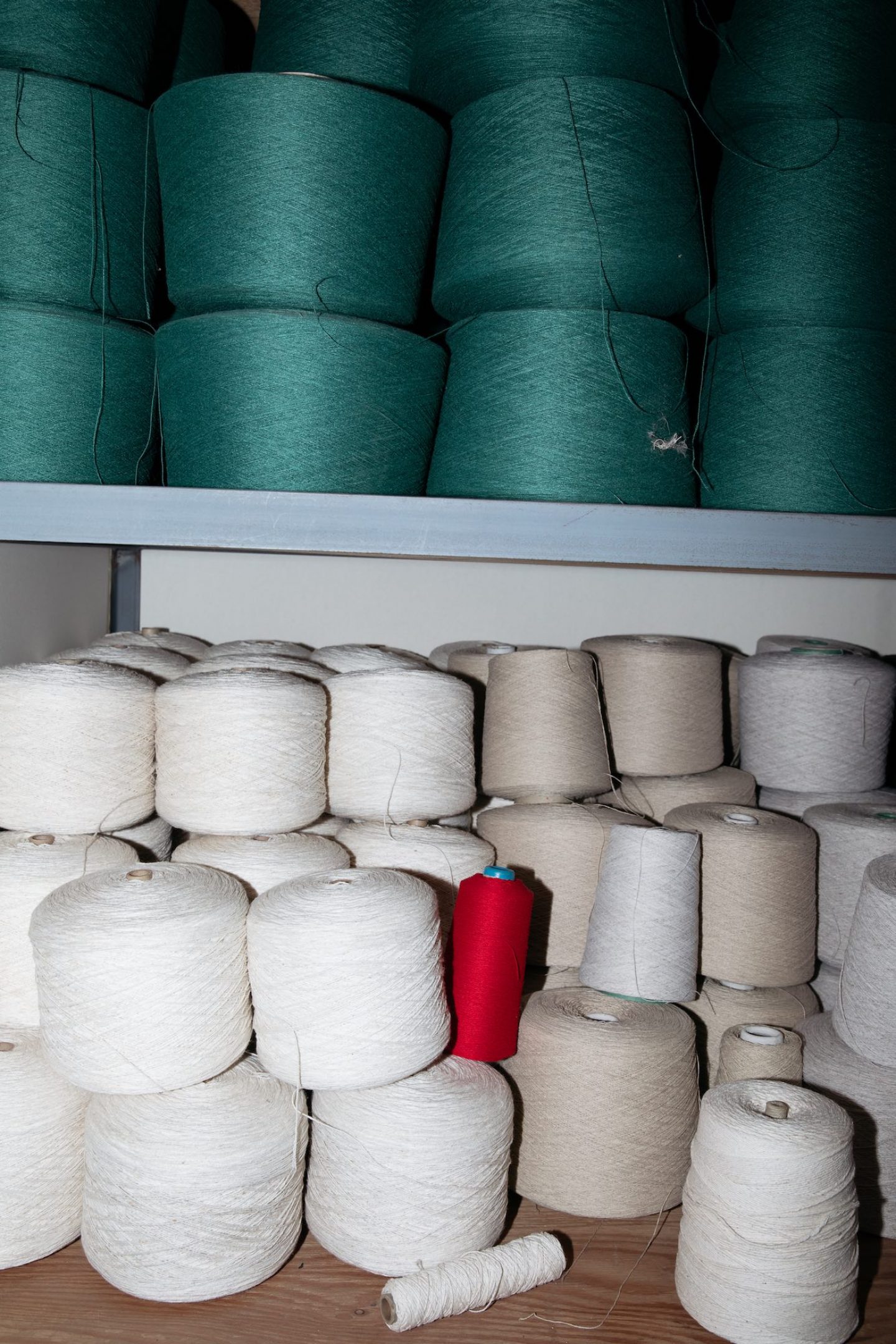
This article was produced in partnership with Ace Hotel Chicago. For Ace Hotel Chicago, Atelier Ace worked collaboratively with students, artists, designers and retailers to celebrate the tried and true nature of the windy city. One of these design studios was The Weaving Mill — whose fabric and vision can be seen in cushions that adorn the lobby lounge at Ace Hotel Chicago.
All images © Lukas Korschan for iGNANT Production
